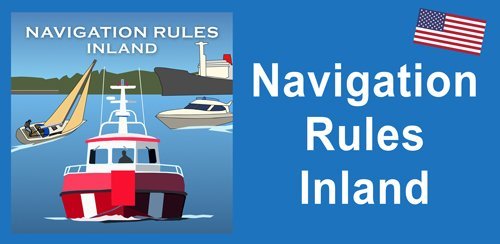Owning a boat is not just about cruising the open waters; it’s also about customising and improving your vessel to suit your needs and preferences.
While some boat upgrades can be expensive, there are plenty of budget-friendly DIY projects that can enhance both the functionality and aesthetics of your boat. In this article, SafeSkipper explores a variety of DIY boat upgrades that won’t break the bank but will significantly enhance your boating experience.
- Installing LED Lighting
One of the simplest yet most impactful upgrades you can make to your boat is installing LED lighting. LED lights are energy-efficient, durable, and come in a variety of colors and styles. Consider adding LED strip lights under gunwales, in storage compartments, or along stairways for improved visibility and ambience. LED cockpit lights can also enhance night-time navigation and make your boat more visible to other vessels.
- Adding Storage Solutions
Maximize space and organization on your boat by adding custom storage solutions. DIY projects like installing overhead storage nets, creating custom tackle boxes, or adding shelves and compartments to unused spaces can help keep clutter at bay and make it easier to find and access your gear.
Creative storage solutions are essential for maximizing space and organization on a small boat, where every inch counts. Here are just some creative storage ideas tailored specifically for small boats:
- Utilize Vertical Space:
Use mesh or fabric pockets attached to bulkheads or cabin walls to hold smaller items like sunscreen, sunglasses, keys, and handheld electronics.
- Optimize Under-Seat Storage:
Install hinged or removable seat cushions with storage compartments underneath for easy access to frequently used items without sacrificing seating comfort.
- Install Overhead Storage:
Install overhead storage compartments or hammock-style nets above seating areas or bunks to store lightweight items such as towels, clothing, and bedding.
Use bungee cords or netting to secure items in place and prevent shifting or falling during rough seas or sudden maneuvers.
- Convert Unused Spaces:
Convert unused or awkward spaces on the boat, such as under stairwells, in bow lockers, or within bulkheads, into storage areas by installing custom-fit bins, shelves, or compartments.Use stackable storage containers or collapsible bins to maximize space efficiency and adaptability for different types of gear and provisions.
- Organize with Hanging Bags:
Hang mesh or fabric bags from rails, lifelines, or stanchions to store smaller items such as water bottles, snacks, tools, or personal accessories.
- Secure Gear with Hooks and Clips:
Install hooks, clips, or bungee cords throughout the boat to secure gear, equipment, and accessories in place during transit or rough seas.
Use adjustable straps or webbing to secure larger items such as coolers, dive tanks, or water sports gear to railings, cleats, or other sturdy fixtures.
- Secure Items with Velcro and Adhesive Strips:
Use self-adhesive Velcro strips or mounting tape to secure lightweight items such as flashlights, handheld electronics, or small containers to walls, ceilings, or cabinetry.
Velcro straps or ties can also be used to bundle and organize cables, cords, and hoses to prevent tangles and clutter.
- Upgrading Audio Systems
Enhance your onboard entertainment with a budget-friendly audio upgrade. Replace outdated speakers with marine-grade options that are designed to withstand the harsh marine environment. Consider adding a Bluetooth-enabled stereo system or amplifier for wireless music streaming from your smartphone or other devices.

4. Installing a Fish finder
For anglers, installing a fish finder can significantly improve your fishing experience without breaking the bank. Fish finders offer several advantages for anglers, both novice and experienced, helping them locate fish more efficiently and effectively. Here are some of the key advantages:
- Locating Fish:
The primary advantage of a fish finder is its ability to locate fish beneath the water’s surface. Using sonar technology, fish finders can detect fish and other underwater structures, providing real-time information to anglers about the presence and location of potential catches.
- Depth Detection:
Fish finders can measure water depth accurately, allowing anglers to identify the depth at which fish are holding. This information is crucial for determining where to position bait or lures at the optimal depth for catching fish.
- Identifying Structure:
Fish finders can also detect underwater structures such as rocks, submerged logs, reefs, and vegetation. These structures often attract fish, so being able to identify them helps anglers target productive fishing spots more effectively.
- Water Temperature and Thermoclines:
Many fish finders come equipped with sensors that measure water temperature. This feature is particularly useful for locating thermoclines, which are distinct temperature boundaries where fish often congregate. Anglers can use this information to target specific temperature zones where fish are most active.
- Navigation:
In addition to locating fish, fish finders can also help with navigation by providing information about water depth and underwater hazards. This can be especially valuable when navigating unfamiliar waters or fishing in shallow areas where depth changes quickly.
- Saving Time:
By providing real-time information about fish location and underwater structure, fish finders help anglers save time by eliminating the guesswork involved in finding productive fishing spots. This allows anglers to focus their time and effort on areas more likely to yield successful catches.
- Improving Fishing Success:
Overall, fish finders can significantly improve an angler’s chances of success by providing valuable insights into underwater conditions and fish behavior. Whether fishing in freshwater or saltwater, inshore or offshore, a fish finder can be a valuable tool for increasing catch rates and enhancing the overall fishing experience.
Versatility:
Fish finders are available in a wide range of sizes and configurations, making them suitable for use on various types of boats, kayaks, and even from shore. They can be used in different fishing environments, including lakes, rivers, oceans, and estuaries, making them a versatile tool for anglers of all skill levels.
Overall, fish finders offer numerous advantages for anglers, helping them locate fish more efficiently, navigate safely, and ultimately enjoy a more successful and rewarding fishing experience.
- Upgrading Seating and Upholstery
Refresh the look and comfort of your boat by upgrading seating and upholstery. Replace worn-out cushions and upholstery with marine-grade materials that are resistant to water, UV rays, and mould. You can also add extra padding or lumbar support for added comfort during long days on the water.
- Installing a Bimini Top or Sunshade
Protect yourself and your passengers from the sun’s harmful rays by installing a bimini top or sunshade. DIY bimini top kits are relatively affordable and easy to install, providing shade and shelter without the need for expensive professional installation. Choose a material and color that complements your boat’s aesthetic and provides adequate coverage for your cockpit area.
- Adding a Swim Platform
Make swimming and watersports more accessible by adding a swim platform to your boat. DIY swim platform kits are available for a fraction of the cost of professionally installed options and can be customized to fit your boat’s specific dimensions. A swim platform provides a convenient entry and exit point for swimmers and can also serve as a staging area for watersports activities.
- Installing a DIY Rod Holder
For anglers, adding rod holders to your boat can make fishing more convenient and enjoyable. DIY rod holder kits are available in various styles and configurations, allowing you to customize your setup to accommodate multiple rods and fishing techniques. Install rod holders on gunwales, railings, or the transom for easy access while trolling or casting.
- Upgrading Navigation Equipment
Enhance your safety and navigation capabilities by upgrading your boat’s GPS, chartplotter, or compass. While high-end marine electronics can be costly, there are many budget-friendly options available that offer essential features like waypoint tracking, depth sensing, and AIS compatibility. Install the equipment yourself using DIY installation guides or consult with a professional for assistance.
- Adding Custom Deck Flooring
Transform the look of your boat’s deck with custom flooring options like marine-grade carpeting, synthetic teak, or non-slip rubber mats. DIY installation kits are available for many flooring materials, making it easy to customize your deck to match your style and preferences. Choose a material that is durable, easy to clean, and resistant to water and UV damage.



Conclusion
Enhancing your boat doesn’t have to be expensive or complicated. With a bit of creativity and DIY know-how, you can tackle a variety of budget-friendly projects that will improve the functionality, comfort, and aesthetics of your vessel. Whether you’re adding LED lighting, upgrading audio systems, or installing storage solutions, these DIY boat upgrades are sure to enhance your boating experience without breaking the bank. So roll up your sleeves, grab your tools, and get ready to take your boat to the next level!








